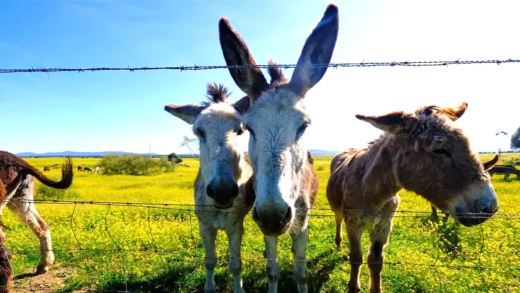This article explores the ten longest-lived empires in history, examining their durations, key factors for longevity, major achievements, cultural influences, reasons for decline, fascinating anecdotes, and lessons applicable to modern societies. It also compares their sizes and populations and highlights notable figures who shaped these empires.
The Longest-Lived Empires
When we talk about the longest-lived empires, we refer to those extraordinary realms that have managed to endure through centuries, shaping the world in countless ways. Here’s a list of the top 10 longest-lived empires and their durations:
- Roman Empire – 1,500 years (27 BC – 476 AD)
- Byzantine Empire – 1,000 years (330 AD – 1453 AD)
- Chinese Empire – 2,200 years (221 BC – 1912 AD)
- Ottoman Empire – 600 years (1299 – 1922)
- Spanish Empire – 300 years (1492 – 1898)
- British Empire – 400 years (1583 – 1997)
- Persian Empire – 1,200 years (c. 550 BC – 651 AD)
- Mongol Empire – 200 years (1206 – 1368)
- Holy Roman Empire – 1,000 years (800 – 1806)
- Russian Empire – 300 years (1721 – 1917)
Each of these empires left a significant mark on history, from legal systems to cultural practices. Their durations illustrate not just survival, but also adaptability and influence.
Key Factors for Longevity
The longevity of empires often stems from a combination of factors that allow them to thrive over extended periods. Here are some key reasons that contributed to the long-lasting nature of these empires:
- Strong Leadership: Effective rulers and visionary leaders helped guide the empire through crises.
- Military Strength: A powerful army protected territorial integrity and deterred invasions.
- Economic Stability: Prosperous trade routes and abundant resources supported growth.
- Cultural Assimilation: Embracing diverse cultures fostered unity and reduced resistance.
- Innovative Governance: Flexible administrative structures allowed adaptation to changing circumstances.
These factors created a resilient foundation, enabling these empires to withstand various challenges over centuries.
Major Achievements
Throughout their histories, the achievements of ancient empires have significantly influenced the modern world. Here are some notable contributions:
- Roman Empire: Development of legal systems and architectural marvels like aqueducts.
- Chinese Empire: Inventions such as paper and gunpowder that transformed societies.
- Ottoman Empire: Cultural fusion, leading to advancements in art and architecture.
- Mongol Empire: Establishment of the Silk Road, enhancing trade across continents.
Each empire’s achievements not only reflect their grandeur but also their lasting impact on global civilization, serving as a testament to their significance in history.
Cultural Influence of Empires
The cultural influence of empires resonates through history, shaping societies in profound ways. Each of the longest-lived empires contributed unique cultural elements that still echo in today’s world:
- Roman Empire: Introduced Latin as a lingua franca, influencing languages across Europe. Roman law and governance set standards still in use.
- Chinese Empire: Fostered Confucianism, which shaped moral and social values, and introduced innovations like silk and porcelain that became cultural staples.
- Ottoman Empire: Merged diverse cultures, leading to a rich tapestry of art, music, and cuisine that continues to thrive.
- Persian Empire: Promoted Zoroastrianism, impacting religious thought and cultural practices across regions.
These empires not only influenced their immediate regions but also left a legacy that extends globally, showcasing how longest-lived empires can profoundly affect cultural identity and practices.
Reasons for Decline
The decline of even the most formidable empires is often attributed to a mix of internal and external factors. Understanding these reasons sheds light on why some of the longest-lived empires eventually fell:
- Economic Strain: Overexpansion and resource depletion strained finances, leading to instability.
- Political Corruption: Ineffective governance and corruption weakened authority and loyalty among subjects.
- Military Defeats: Losses in critical battles eroded confidence and territorial control, inviting further incursions.
- Cultural Stagnation: Failure to adapt to new ideas and technologies led to a decline in innovation and competitiveness.
These factors combined often resulted in a domino effect, causing the collapse of empires that had once thrived for centuries, reminding us that even greatness can fade.
Anecdotes and Stories from Great Empires
The tales and legends of empires provide fascinating insights into their lives. Here are some captivating anecdotes:
- The Roman Empire: The story of Julius Caesar crossing the Rubicon symbolizes decisive action and defiance, echoing through time as a metaphor for irreversible decisions.
- The Ottoman Empire: The tale of Suleiman the Magnificent, who reformed the legal system and expanded the empire, showcases the blend of strength and wisdom.
- The Chinese Empire: Legends of the Great Wall’s construction illustrate human determination and the lengths taken to protect the realm.
- The Mongol Empire: Genghis Khan’s rise from humble beginnings to creating the largest contiguous empire serves as a powerful narrative of ambition and strategy.
These stories not only entertain but also reflect the values and aspirations of the cultures within these longest-lived empires. They remind us that behind every empire lies a tapestry of human experience and emotion.
Lessons from the Past: What Modern Societies Can Learn
The longest-lived empires offer valuable lessons that modern societies can apply to thrive today. Here are some key takeaways:
- Adaptability: Successful empires adapted to changing circumstances, whether through military reforms or cultural assimilation. Modern societies should remain flexible to meet new challenges.
- Strong Leadership: Visionary leaders often made pivotal decisions that shaped the course of their empires. Today’s leaders can draw inspiration from historical figures to guide their communities effectively.
- Economic Foundations: Economic stability was crucial for empire longevity. Modern nations should prioritize sustainable economic practices and diversified economies to ensure growth.
- Cultural Integration: Embracing diversity strengthened empires. Today’s societies can benefit from promoting inclusivity and cultural exchange to foster unity and innovation.
- Historical Awareness: Understanding past successes and failures can inform current policies. By studying historical empires, we can avoid repeating mistakes and build resilient communities.
These insights from the achievements of ancient empires remind us that learning from history can pave the way for a prosperous future.
Comparative Analysis: Size and Population of Empires
Understanding the territorial size of empires and their populations provides perspective on their influence. Here’s how some of the longest-lived empires compared:
- Roman Empire: At its height, it covered approximately 5 million square kilometers and boasted a population of around 60 million.
- Chinese Empire: Spanning vast territories, it had an estimated population of over 100 million during the Tang Dynasty.
- Ottoman Empire: It controlled about 5.2 million square kilometers and had a diverse population exceeding 30 million.
- Mongol Empire: Although short-lived, it was the largest contiguous empire, covering 33 million square kilometers, with a significant population.
These figures illustrate how the longevity of empires was often linked to their capacity to govern large populations and vast territories effectively, ensuring stability and cultural exchange.
Notable Figures that Shaped Empires
The key figures in empires played pivotal roles in their longevity. Here are some notable leaders whose actions defined their respective empires:
- Julius Caesar (Roman Empire): His military genius and political reforms laid the groundwork for the future of Rome.
- Genghis Khan (Mongol Empire): Known for his strategic brilliance, he united the Mongol tribes and expanded the empire across Asia.
- Emperor Akbar (Mughal Empire): His policies of religious tolerance and administrative reforms strengthened the empire’s foundations.
- Suleiman the Magnificent (Ottoman Empire): He expanded the empire’s territory and reformed its legal system, leaving a lasting legacy.
These leaders exemplify how individual vision and leadership can significantly influence the longevity of empires, setting examples for future generations.
Final Reflections on the Legacy of Empires
The impact and legacy of the longest-lived empires continue to resonate today. Their stories teach us about resilience, adaptability, and the complexities of governance. While many empires have fallen, their contributions to culture, law, and governance persist in modern societies. Understanding the rise and fall of these empires highlights the importance of learning from history to avoid the pitfalls of the past. As we navigate contemporary challenges, the lessons from these ancient civilizations can guide us toward building a more inclusive and sustainable future.





Comments are closed.